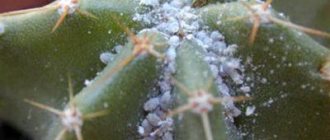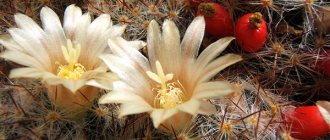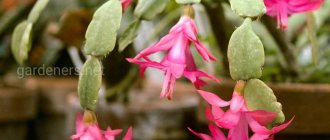The word “cactus” served the inhabitants of Ancient Greece so that they could use it to designate any plant unknown to them. "What is this?" - one ancient Greek asked another. “Oh, some kind of cactus!” - he answered if he was not aware of which representative of the flora was in front of him. This went on for quite some time, but Carl Linnaeus intervened in the process of using the word. The world's most famous botanist decided to use this term to designate a very specific type of plant. This event happened in the first half of the 18th century - long after cacti appeared on Earth.
Researchers believe that cacti began to grow on our planet about 35 million years ago. Impressive, isn't it? And over such a long period of existence of the cactus genus, real giants appeared on Earth, worthy of the Guinness Book of Records. Our focus today is on the three most gigantic thorns in the world.
Giant Cereus
The world's largest cactus is a relict plant of the Sonoran Desert and is protected by the US authorities. The territory where it grows has been declared a national park. Unauthorized cutting down or damage to saguaros will result in criminal penalties.
Carnegia giant is a unique symbol of the Wild West: it can be seen in Western films and in paintings by American artists. Tourists take picturesque full-length photos against the backdrop of a huge cactus.
Saguaro fruits are edible: they are eaten raw or a starter is prepared from them, which is used to ferment low-alcohol drinks. The resulting product tastes like moonshine and is served at all local holidays. Cactus pulp is used in folk medicine as an external analgesic and a means of relaxation.
Cereus growing straight and upward form tall hedges that perform decorative and protective functions. The strong fibers of cactus wood form a loose layer consisting of winding loops. Cereus wood is used in the construction of bridges, beams, pillars, and thresholds in small houses.
Cacti without thorns
Did you know that not all cacti are covered with spines? There are very spectacular views without them at all, and we will talk about this in the continuation of the collection. They are often confused with succulents, and there really are a lot of similarities!
Hathiora
Oddly enough, hathiora actually belongs to the cactus family. Looking at its segmented long shoots, reminiscent of coral, it’s hard to believe. By the way, it also blooms with bright yellow bells.
Photo: na-earth.info
Ariocarpus
Flower growers adore it for its amazing appearance, thanks to which Ariocarpus cannot be confused with anything. Technically, it has spines, but they are underdeveloped. But the flowers are surprisingly good.
Photo: profermerov.ru
Rhipsalis
The unusual South American plant consists entirely of dozens of branching ribbed stems without leaves or thorns. This is an excellent hanging option that will delight you with flowering in winter.
Photo: na-dache.pro
Oreocereus
At first glance it seems prickly, but in fact it is just thick, coarse hairs. At home, they protect the plant from night frosts. However, there are also quite needle-shaped varieties.
Photo: forum.cactofili.org
Epiphyllum
Another tropical resident without leaves or thorns, who feels quite comfortable in the apartment. The flat, wide shoots of the epiphyllum themselves resemble leaves. Particularly impressive are the large flowers up to 12 cm in diameter.
Photo: domashniecvety.ru
Schlumberger
She is also a Decembrist and a zygocactus. The ribs of its segmented shoots are covered with small teeth, but still they cannot be called full-fledged spines. Schlumbergera blooms within a month, right before the new year.
Photo: kufar.by
Pereskia
An ancient heat-loving species that looks like an ordinary bush with fleshy, smooth leaves. But keep in mind that there are still thorns on the stems of pereska, so handle it more carefully.
Photo: gardennews.ru
Rhipsalidopsis
Ripsalidopsis resembles Schlumbergera - with the same flat, segmented shoots, even without a serrated edge. The species can be easily distinguished from each other by the structure of these segments.
Photo: vk.com
Detailed description of appearance
The growing season of a cactus is about 300 years. The plant is a ribbed green column weighing 6-10 tons, 50-65 cm thick and 15-20 m high. A well-developed trunk has 12-24 large sides with gray, brown or black spines. 8-12 branches branch vertically from the trunk.
Saguaros have no leaves. The rudiments of small leaves, similar to irregularly shaped scales, can be seen in the deep grooves of some young plants. The role of leaves responsible for gas exchange is played by green stems. The dense skin has a small number of stomata. Under the skin there are cells containing cell sap. In arid climates it serves as a source of liquid. An adult cereus holds about 2 tons of water inside.
Carnegia gianta has a powerful root system located in the surface layer of the earth. During the rainy season, the roots quickly absorb moisture and transfer it to the plant cells. During drought, the cactus does not evaporate moisture, but firmly retains it inside the stem.
The plant blooms about 30 days a year: from May to June. Flowers appear from buds on the trunk and branches of trees. Peduncles are large, tubular, solitary. They can be painted in different shades: from purple to white.
They are pollinated by insects, bats or small birds. The fruits are large, fleshy berries that are suitable for consumption.
Is it possible to grow “giants” at home?
You may be surprised, but cactus tips won’t let us lie: all of the listed plant species can be easily grown at home. Of course, you won’t be able to create a giant in a pot. However, ferocactus, cereus, and carnegia are able to settle on a home windowsill and bring a lot of aesthetic pleasure to their gardener.
Ferocactus on the windowsill
Ferocactus is that same glorious ball that seems to rise above the pot in the form of a hemisphere and at some point blooms: one or several bright and eye-catching inflorescences appear on the body, covered with thorns. This spectacle looks amazing.
- Location. For normal development, ferocactus requires a well-lit place. If your house has a window that “looks” to the south, it would be logical to place a pot of cactus on this particular window sill. In the summer, it makes sense to send a potted cactus to an open balcony or loggia - that is, where there is free access to fresh air. You can even take the ferocactus outside: into the garden, front garden or on the outside of the window sill, if we are talking about a city apartment.
- Watering. Ferocactus should be watered only after the substrate with which its pot is filled has completely dried. If your city apartment is quite cool in winter (up to 22 degrees Celsius), then from November to early spring you can safely stop watering the ferocactus. If your home is warm, continue to water the plant in winter in the same way as you did in summer.
- Humidity. Ferocactus does not need additional moisture. But the plant needs a warm shower from time to time. But only in order to wash away the remaining dust accumulated on the cactus. If you are not comfortable with organizing bathing procedures for a cactus, use a regular paint brush: just brush off specks of dust from the flower from time to time - and it’s done.
- Substrate for planting. For normal growth and development, ferocactus requires calcareous or rocky soil. In nature, it grows in just such soil. The acidity should be quite significant: the pH should vary from 7 to 8 divisions.
When planting ferocactus, be sure to ensure that the planting container has a high-quality drainage system. Under no circumstances should moisture stagnate in the pot.
Carnegia on the windowsill
Carnegia, which is grown at home, is a fairly large tree-like cactus. It belongs to the erect species of the thorny family. It grows quite slowly and is not a giant at home. So don’t be afraid that Carnegia will grow up to fifteen meters, as in its natural habitat. Feel free to grow this cactus for your own joy. Moreover, it is not at all difficult to do this.
- Location. The place for the carnegia in the pot should be chosen so that it receives the maximum amount of sunlight in any season. This plant loves light very much and cannot develop well without it. Don't be afraid to roast your carnegia in the sun. Send it to the south windowsill. Or during the day, transfer from east to west, which, of course, is much less convenient.
- Watering. In winter, carnegia should be watered only when the substrate is completely dry. In the spring-summer period, you need to water rarely, but well: so that the lump of earth is completely wet. But the moisture that drains into the pan cannot be left in this form. It must be drained.
- Humidity. There is no need to spray carnegia, like ferocactus. Do not overuse moisture. Carnegia loves dry, but clean air. In this regard, one more rule: be sure to frequently ventilate the room in which one of the most giant cacti in the world grows. But at the same time, remove the pot with carnegia away from drafts - this can have a detrimental effect on the plant.
- Substrate for planting. You can prepare the soil for planting carnegia yourself. To do this, you need to take one part of leaf soil and one part of turf soil. To this mixture you should add two parts of fairly coarse sand. The substrate for planting the cactus is ready. It is extremely important to know that this plant does not like soil that is too acidic. The maximum soil pH should not be higher than 6.5.
Experts recommend adding small pieces of charcoal to the soil when planting carnegia. This additive will improve the drainage of the substrate.
Cereus on the windowsill
Cereus at home is a handsome blooming flower, a real pride of the gardener. But in order for flowering to happen, and for it to happen on time, a number of recommendations should be followed.
- Location. The best place to place a pot of cereus will be a southwest, southeast or south window. Cereus should have high-quality lighting at any time of the year.
- Watering. Using hard and cold water to water the cereus is strictly prohibited. Before moistening the soil, make sure that the water has settled and reached room temperature. If possible, water your cereus with filtered water.
- Humidity. Between the beginning of April and the end of September, the giant cactus needs additional moisture. You can satisfy this flower need by spraying the plant with a spray bottle two to three times a week.
- Substrate for planting. Alkaline soil is not suitable for planting cereus. The soil must be either acidic or neutral. The required components of the substrate for this cactus must be sand and brick chips.
Under no circumstances should you plant cereus in soil that is rich in humus. This will destroy the exotic plant. We hope our recommendations will help you grow your own miniature giant.
Additional information about the plant
Interesting facts about the cactus:
- The name cereus translated from Latin means “torch”, “candle”, “wax”.
- The giant cereus can tolerate temperatures below 0 °C and snow.
- Scientists suggest that the cactus previously also grew in Africa and East Asia.
- The plant does not bloom in the growing season from 50 to 75 years.
- Representatives of the Hohokam culture endow cereus with the ability to evoke prophetic visions.
- The Tohono O'odham people use cactus spines as sewing needles.
- Small animals like to make their homes in dried cacti: owls, mice, woodpeckers, snakes.
- The saguaro begins to actively grow only after 30 years of life.
The growth rate of a cactus greatly depends on the degree of soil moisture. In the Mexican deserts, giant cereus reaches adult size 2 times slower than, for example, in Arizona.
Third place: ferocactus
There are some pretty desert states in North America. For example, distant Utah or New Mexico. It is there, in wastelands, in the absolute wilderness and spacious steppe, which is not distinguished by an abundance of vegetation, that ferocacti live. These flowering plants can be spherical or cylindrical. And some types of ferocactus are truly gigantic in size. Take Ferocactus pilosus for example: this species of one of the most gigantic cacti in the world can reach a meter in diameter. Such plants can grow up to four and a half meters in height. Seeing this, I can’t even believe that the cactus sitting in a pot on the windowsill and this North American giant are closest relatives.
Ferocactus was discovered by a botanist named Houston. The plant was discovered by a researcher in Mexico at the end of the eighteenth century. William Houston immediately notified the world scientific community about the discovery.
Carnegie Pests and Diseases
This plant can be attractive to a variety of pests, but you are unlikely to find pests on a cactus in good condition. However, there are a few parasites to keep an eye on:
- Spider mite . If found, water the top of the Saguaro well to help get rid of mites;
- Mealybugs . Sometimes you can find small growths among the fur, but the worst case scenario is when they develop in the ground on the roots. In this case, it is not possible to notice them except by the consequences of their activities;
- Rot is not a big problem for cacti as long as they are watered properly and the soil is allowed to dry out. Otherwise, you are unlikely to save the infected plant, even using fungicides.
How to propagate Saguaros
The only effective method of propagating Carnegia is by seeds, since side shoots are rarely available and often do not take root.
It is advisable to plant Carnegiea seeds in the spring.
- Select a small container with drainage holes and fill it with the prepared soil mixture (described above).
- Using a sharp pencil, make several tiny holes about 3cm apart and place the saguaro seeds in them and cover them with soil.
- Cover the container with plastic wrap and poke small holes in it.
- Water the seeds once every ten days and begin temporarily removing the plastic wrap after four to six weeks. After this period, you can water the cactus once a month.
- Seeds germinate in 7-14 days at a temperature of 21-27 °C. The seedlings should not be disturbed until they are well established, after which they can be planted individually in small pots.
The article uses materials from the sites: cactusway.com, gardenbeast.com and photos from commons.wikimedia.org











